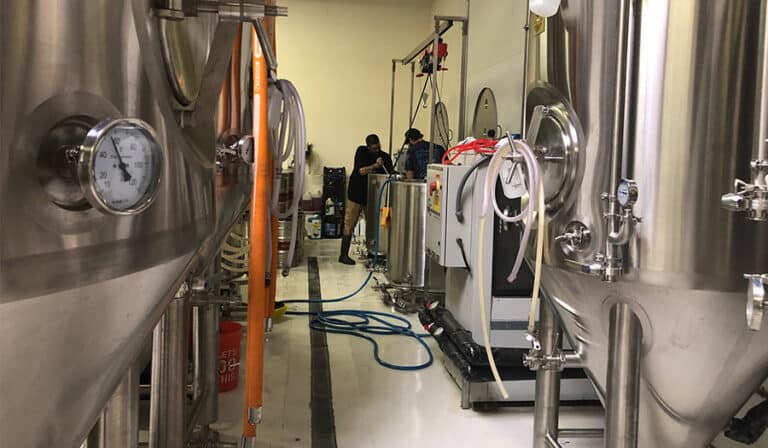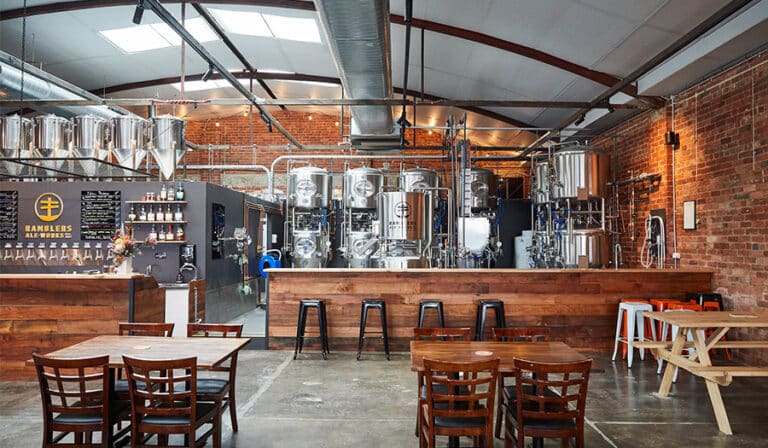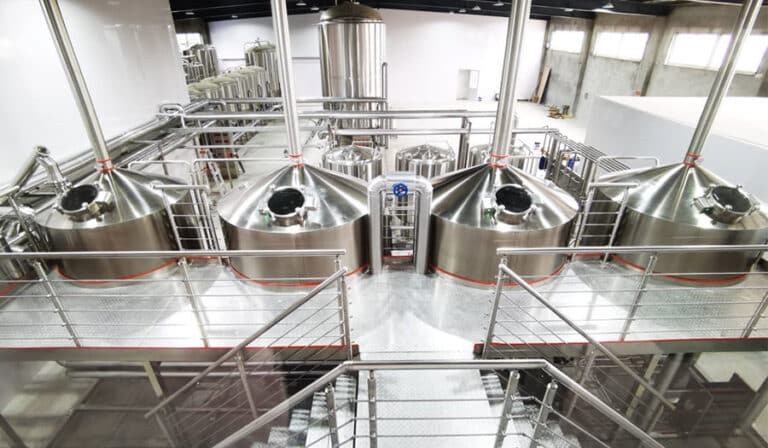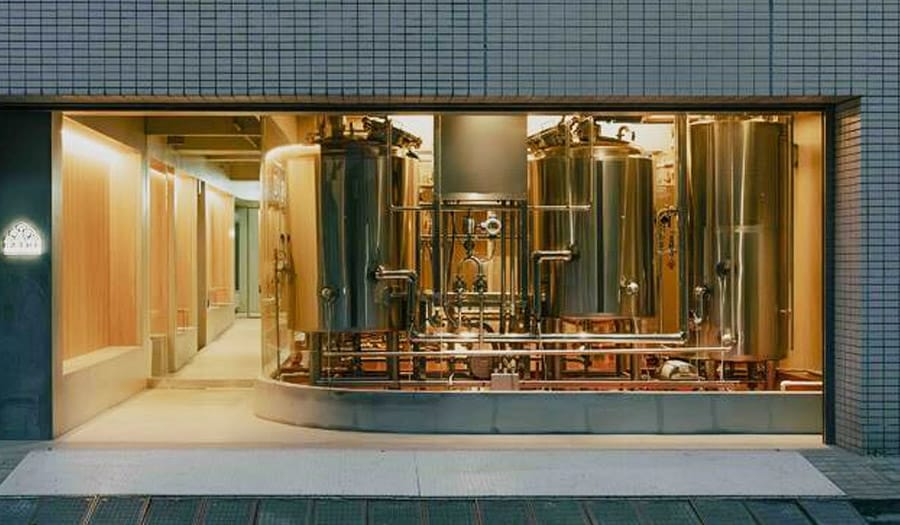The beer industry is large and varied, catering to different market needs and customer preferences. So before launching a new business, it’s important to understand all the different types of breweries you can open and operate. The development of craft beer has led to a dramatic increase in breweries around the world, which in turn has diversified the beer market and driven new demand. This guide details the characteristics of different types of breweries and provides you with the tools to choose the brewery that’s right for you.

Qu’est-ce qu’une nano brasserie ?
The size of the brewery distinguishes a nano brewery from a microbrewery. Any brewery that produces three barrels or less of beer is a nano brewery. In addition, a new law enacted in New Hampshire expands the definition of a nano brewery. Therefore, a nano brewery produces less than 2,000 barrels per year.
Characteristics of a nano brewery:
- Smaller scale: Unlike traditional breweries, nano breweries have lower production capacity and focus on brewing in small batches. This small scale allows them to be more flexible in trying different recipes and flavors.
- Handcrafted brewing: Nano breweries usually adopt a handcrafted brewing approach and pay attention to the details and quality of brewing. Due to their focus on raw materials and manufacturing processes, they are often able to create unique beer flavors.
- Innovation and experimentation: Due to their small production scale, nano breweries are likelier to innovate and experiment. They can quickly try new recipes, new brewing techniques, and even new materials, and launch limited edition and seasonal beers.
- Flexibility: Nano breweries usually have higher flexibility in their menus and can adjust and launch new flavors more quickly to meet the needs of local consumers for specific flavors of beer.
- In short, nanobreweries are a type of brewery that is small-scale, creative, and quality-oriented. This model is very attractive to consumers who are looking for unique flavors and personalized beverage experiences.
Brasserie artisanale
A brasserie artisanale is a small independent brewery characterized by an annual production of no more than 6 million barrels of beer, and less than 25% of breweries are “owned by members of the alcoholic beverage industry who are not craft breweries themselves”. Craft breweries tend to focus on innovating traditional beverages and providing craft beers with unique flavors that incorporate non-traditional ingredients.
Characteristics of craft breweries:
- Small-scale production: Craft breweries usually have a low annual output, generally between a few thousand and a few hundred thousand liters, and focus on small batches of hand-made brewing.
- Independence: Craft breweries are usually independently operated and not controlled by large brewing groups, emphasizing independent innovation and independent spirit.
- Handcrafted brewing: Most craft beers use traditional handcrafted brewing methods, attaching importance to the quality of raw materials and the details of the brewing process to ensure the unique flavor of beer.
- Innovation and diversity: Craft breweries encourage innovation, try new recipes, new brewing techniques and new materials, and launch limited edition and seasonal beers to meet the diverse needs of consumers.

Microbrasserie
Microbrasserie are classified based on the amount of beer (in barrels) they produce in a year. They can produce up to 15,000 barrels of beer per year, of which 75% must be sold outside the brewery.
However, microbreweries must sell 75% or more of their beer outside the brewery. Some microbreweries still sell beer to beer consumers in small tasting rooms or bars.
Microbreweries complete sales in one of three ways:
- Three-level sales: brewers sell to wholesalers, wholesalers sell to retailers, and retailers sell to consumers.
- Two-level sales: brewers act as wholesalers and sell to retailers, and retailers sell to consumers.
- Direct sales: brewers sell directly to consumers through takeout or on-site sales at bars or restaurants
Brasserie
A brewpub is a combination of a restaurant and a brewery. It must sell at least 25% of its beer on-site and serve delicious food to customers. Brewpub primarily uses beer to provide more choices to consumers in a restaurant or bar. But of course, where permitted by law, Brewpub will sell beer in the same way as other areas.
One of the great advantages of a brewpub is that it can serve beer directly from the brewery’s tanks. Since these large tanks have a strong industrial visual appeal, they are often used as the aesthetic cornerstone of the business. The presence of tanks also creates an authentic atmosphere that many customers appreciate when they are treated to craft beer. In addition, the layout of the brewpub often shows how the beer is brewed and the technical skills required to produce a high-quality beverage.
Taproom Breweries
Taproom breweries are similar to brewpubs and are required to sell more than 25% of their beer on-site. The main difference between a brewpub and a taproom is that a taproom does not provide food and beverage services. Of course, a taproom can also sell beer like other areas.
Brasserie régionale
Regional breweries refer to breweries that produce and sell beer in a specific region or local area. Compared with large industrial breweries, regional breweries are usually smaller in scale and focus on local characteristics and handcrafted brewing.
The following are its main characteristics:
- Locality: Regional breweries often provide unique products for consumers in a specific region, aiming to highlight the local flavor and culture. This localized feature makes the product more approachable.
- Small-scale production: Compared with large breweries, regional breweries have a smaller production scale and usually use traditional or small-batch brewing methods to ensure the quality and flavor of beer.
- Diverse products: Regional breweries usually offer a variety of different flavors of beer to meet the diverse needs of local consumers, and often launch seasonal or limited edition beers.
- Focus on quality and uniqueness: Regional breweries usually have a higher pursuit of the quality and uniqueness of beer, use high-quality raw materials, and are committed to high-quality beer.

Large Brewery
Large breweries are those with an annual production of more than 6 million barrels of beer per year, with more than 25% of total beer production sold out of state. Large breweries combine scale, efficiency, and innovation to meet the needs of a wide and diverse market. Balancing the challenges of large-scale production with the needs of quality, sustainability, and community involvement. Occupying purpose-built structures designed to accommodate the large amount of machinery and equipment required for large-scale production.
Features of large breweries:
- Production scale: Large breweries usually have production capacity measured in millions of liters, which can meet the needs of a wide range of markets and produce much more than small or regional breweries.
- Industrialized manufacturing: These breweries use efficient industrialized production processes, including automated equipment and technology, to improve production efficiency and reduce costs.
- Brand diversity: Large breweries usually have multiple brands and product lines, covering different flavors and types of beer, such as lager, ale, dark beer, etc., which can meet the needs of different consumers.
- Extensive distribution network: Large breweries usually have well-established sales and distribution channels, which can widely distribute products to various markets, including supermarkets, bars restaurants, etc.
- Marketing: Large breweries invest more in marketing and usually conduct large-scale advertising campaigns to enhance brand awareness and market share.
How to choose the right size type of brewery?
There are many factors to consider when choosing the size of your brewery. Your brewery should be large enough to handle your desired production needs, but not too large or expensive to exceed your budget. Breweries come in all different sizes, and there are many different types of breweries, each with its advantages and disadvantages. Consider your space, production, and budget to decide which type of brewery is right for you.
- What is your annual production target? Brewery size = annual production / (weekly beer brewing x number of weeks beer brewing per year)
- What is your business model? A brewpub for on-site consumption, a brewery with a bar but no distribution, or a production brewery with a bar and distribution?
- How much space do you dedicate to the brewery? Typically, the maximum production per square foot of production area is about 1BBL/year.
- How many times do you plan to brew per day and week?
- How many fermenters are you going to purchase? Do you plan to add more fermenters in the future?
- How many types of cask beer do you have ready? Which beer will dominate? Ale has a shorter fermentation time than lager. This will affect your beer container capacity.
- What is the ceiling height of the brewery? While some equipment can be customized to fit the space, this may affect the capacity of the brewery.
- What heat source do you want the brewery to use? Do you have room for additional equipment (boiler, etc.)? Will you be able to add a flue/vent to the space? What is the electrical supply?




